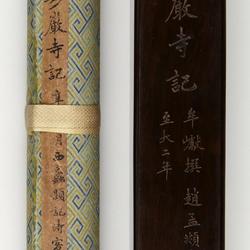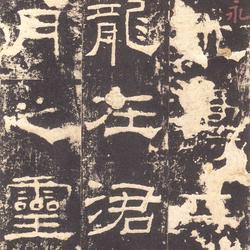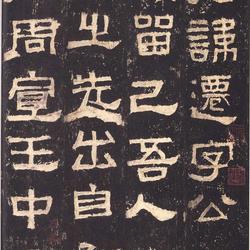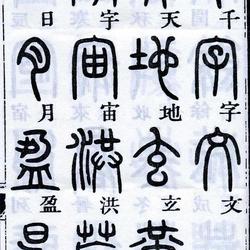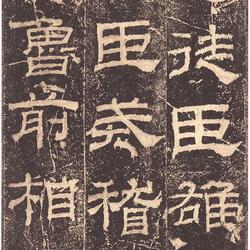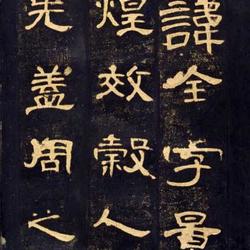Written by Yuan Mou (Shan Xian) and written by Zhao Mengfu. The eight characters on the forehead of the seal, "Xuanmiao Guan Reconstruction of the Three Gates", are also written by Zhao. The full text is about 500 words, intact. There is no date in the text, but there is "year of Renchen" in the text, so it should be in the 29th year of Yuan Dynasty (1292 AD). If this is the case, it should be written by Zhao Mengfu when he was young. There is an engraving of the edition, with horizontal stone inscriptions for writing. And the original work has flowed into Japan. The paper version has special patterns, small margins, and is extremely rigorous. The characters are written in a horizontal position, and the pen seems to be hard but astringent. It may be cooked paper.
It is said that Zhao Mengfu studied calligraphy from Huang Tingjian, then Zhong Yao, Song Gaozong, Wang Xizhi, and finally Li Beihai. He also dabbled in characters such as Zhiyong, Yan Zhenqing, Liu Gongquan, Xu Hao, etc. There are many regular scripts of his left in the world, such as "Miaoyan Temple", "Qiu E's Epitaph", etc., but "Sanmen Ji" should be the most famous. It is said that he wrote this note after someone advised him to study Wei Stele. Therefore, the character shape is more horizontally flat, the horizontal strokes are as parallel as possible, and he often writes with great effort. Therefore it is thicker than others.
People often call them "Yan, Liu, Ou, Zhao". Looking at them from front to back, they are not arranged in chronological order. They are not in the same dynasty, let alone the four masters of regular script in my country. It turns out that this is a tutorial arrangement. In order to establish regular rules for craftsmanship, from the "Tai Ge style" of the Ming Dynasty to the "Guan Ge style" of the Qing Dynasty, the scale has become: first learn Yan to Zhange, then learn Liu to gain muscles and bones, then learn Ou Ming structure, and finally learn Zhao Deqi Beautiful. This is a set of tutorials for "Guange Style". Therefore, Zhao's regular script was quite influential during the Ming and Qing Dynasties. It is undeniable that Zhao's books have a sweet and vulgar side, and the most angular is Sanmenji. Therefore, among Zhao's regular script works, this is the only one we admire.
The reprinted version highlights the marks of the knife and carvings due to the rubbing of the carved stone, which just increases the hard folding trajectory of the square pen.
Another advantage of writing Sanmenji is that you can go deeper into the Wei stele and turn to running script.




"Reconstruction of the Three Gates of Xuanmiao Temple" on paper, length 35.7, width 55.7, text in regular script, length 35.8, width 284.1, collected by the Tokyo National Museum, Japan
The full name of "Sanmen Ji" is "Xuanmiao Guan Reconstruction of Sanmen Ji". It was written by Mou E in the Yuan Dynasty. It was written and sealed by Zhao Mengfu in the sixth year of Dade (1302). Regular script, paper, 3⒌8 cm vertical and 383·8 cm horizontal. There are black silk squares throughout the text, and the characters are large in diameter. There are four lines in front of it, a total of eight small seal characters, and the full text is sixty-four lines, with eight characters in each line, totaling 506 characters. It is basically intact. Now in the collection of Tokyo National Museum, Japan.
Mysterious viewThe building still exists,existIn the most prosperous city center of Suzhou today, a famous Taoist temple, was founded in the second year of Xianning in the Western Jin Dynasty (276). Emperor Ming of Jin Dynasty, Sima Shao, actually dreamed that the Taoist ancestors of the Three Qing Dynasties arrived in Suzhou, so he ordered the monastery to be rebuilt and renamed Shangzhen Taoist Temple. The emperor of the Tang Dynasty claimed to be a descendant of Laozi, revered him as Emperor Xuanyuan, and ordered the establishment of Emperor Xuanyuan temples in the two capitals and various states. Since then it has experienced repeated ups and downs. In the first year of Yuanzhen (1295) of Yuan Chengzong, it was changed to Xuanmiao Guan. Xuan and Yuan were connected, and it was also called Yuan Chao Guan. This name is taken from the phrase "mysterious and mysterious, the door to all wonders" in Laozi's "Tao Te Ching".The Taoist priests in the temple renovated the temple in order to celebrate the plaque given by the imperial court. However, the funds were insufficient, and the three gates were not repaired and were dilapidated, which was incompatible with the brand-new temple. Through the efforts of Taoist priest Yan Huanwen and others, he received a donation from his wife Hu Shi Miaoneng, and then started the renovation of the three gates in the 29th year of the Yuan Dynasty (1292). This monument was erected to commemorate the reconstruction of the three gates.
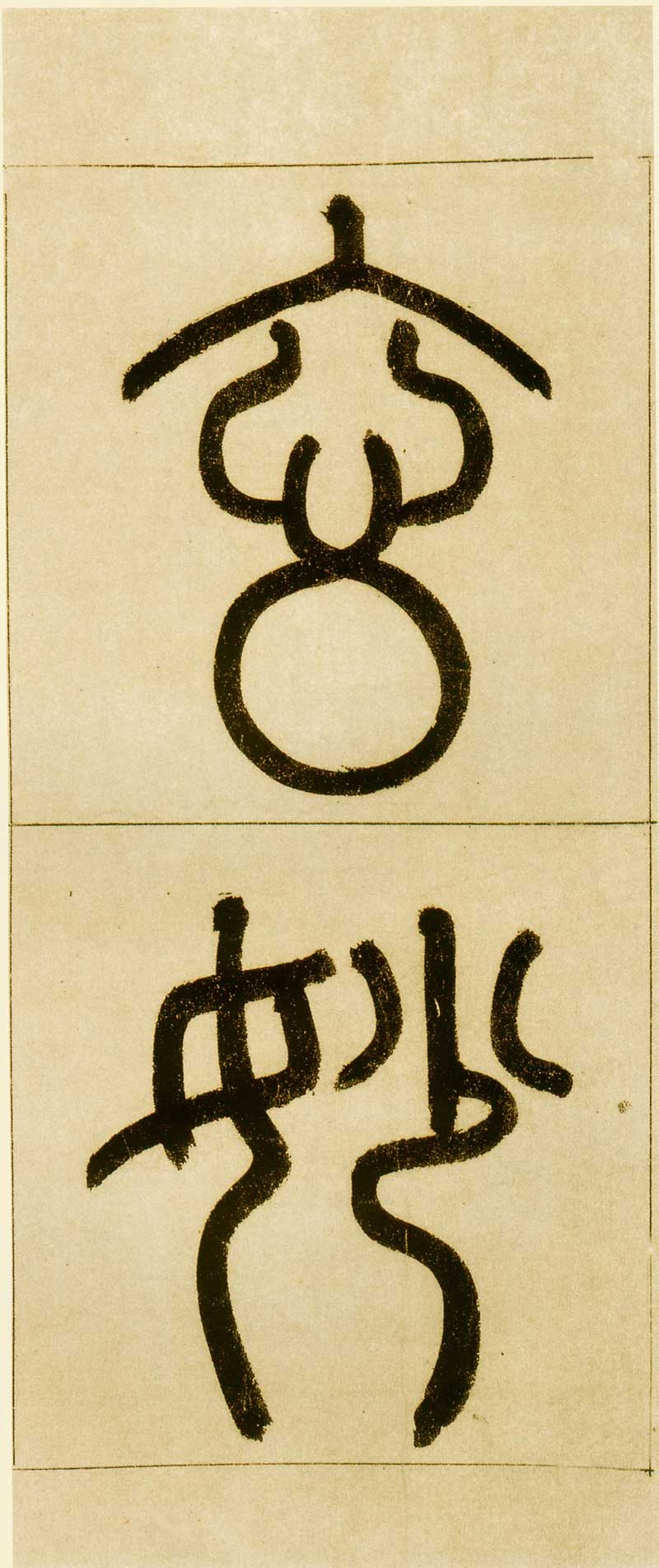
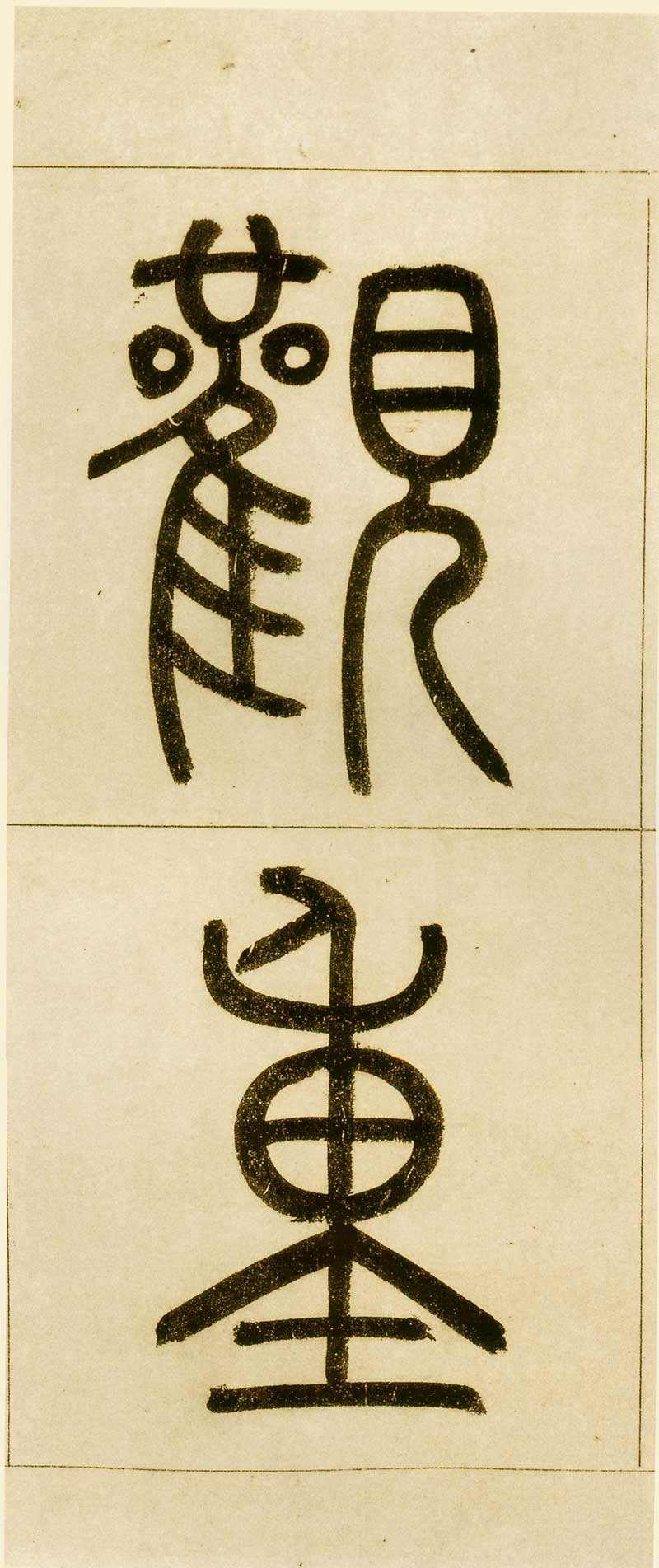
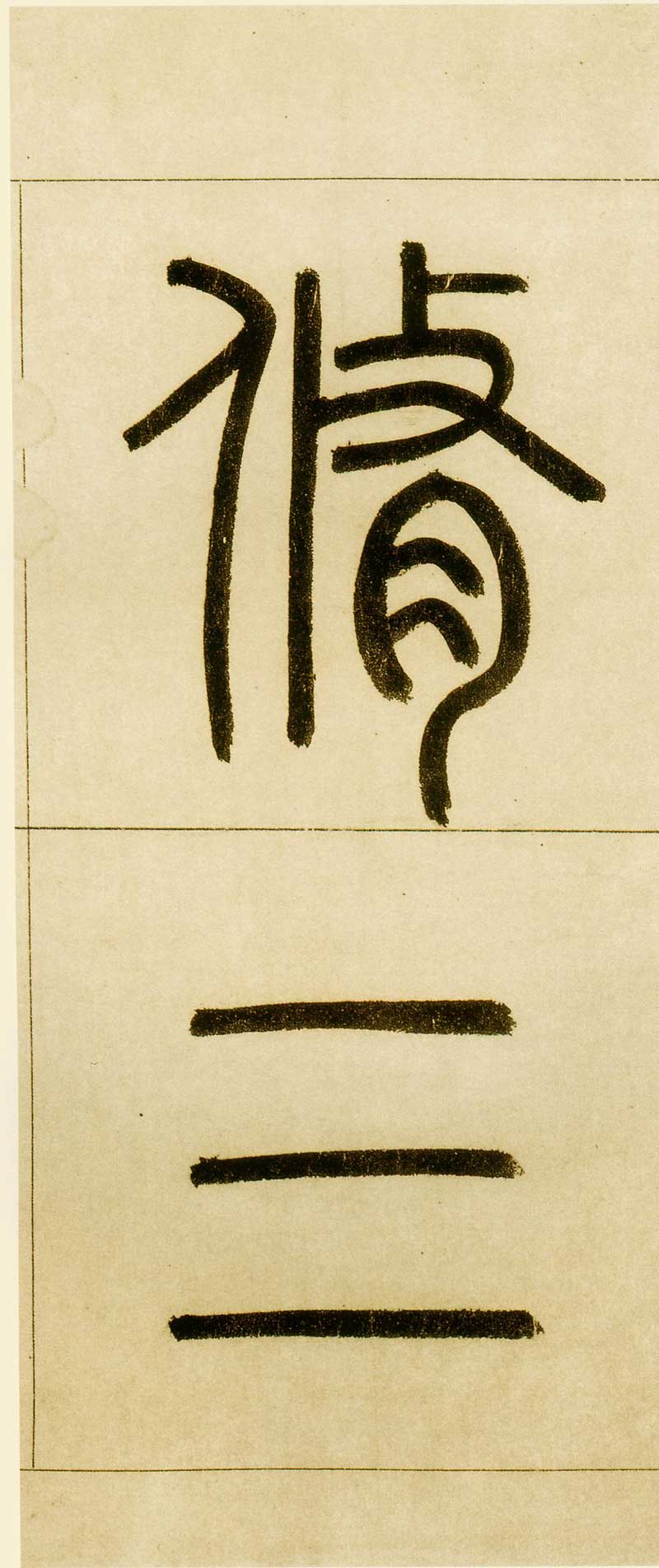
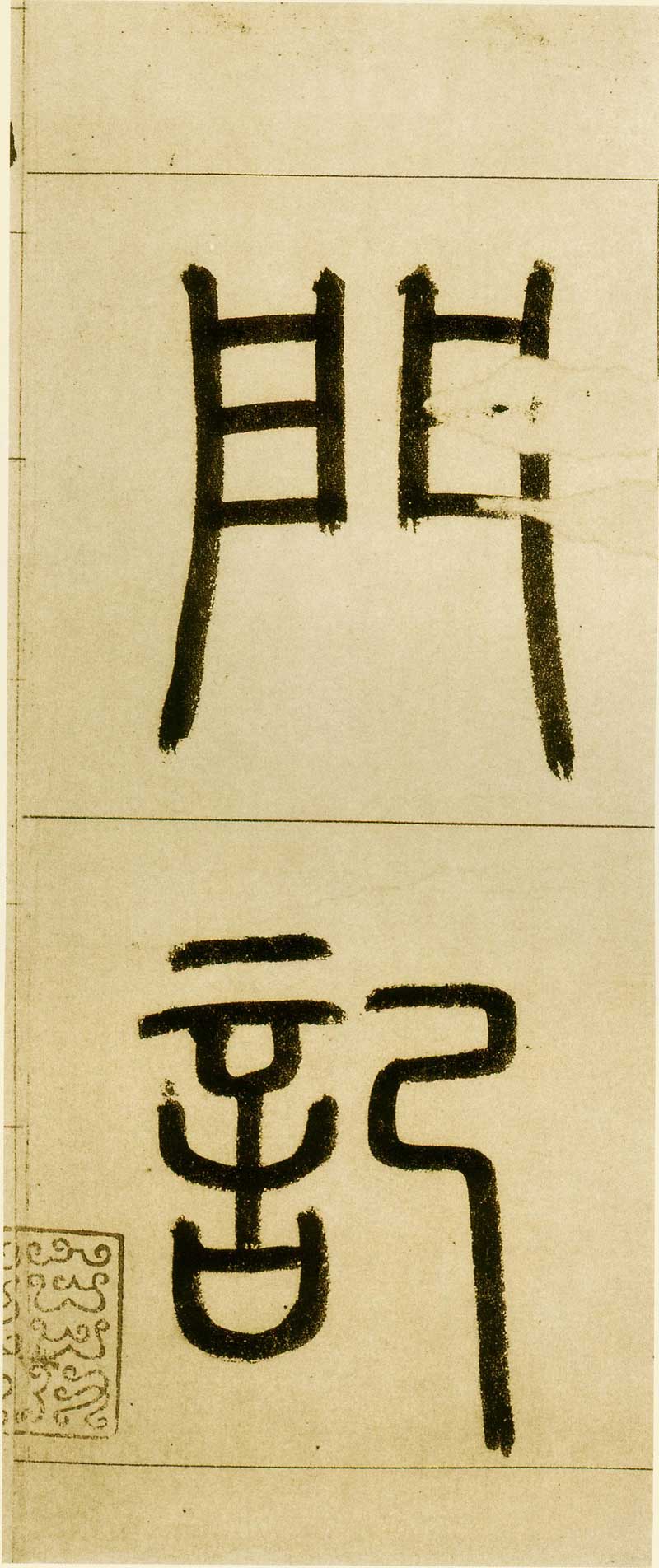
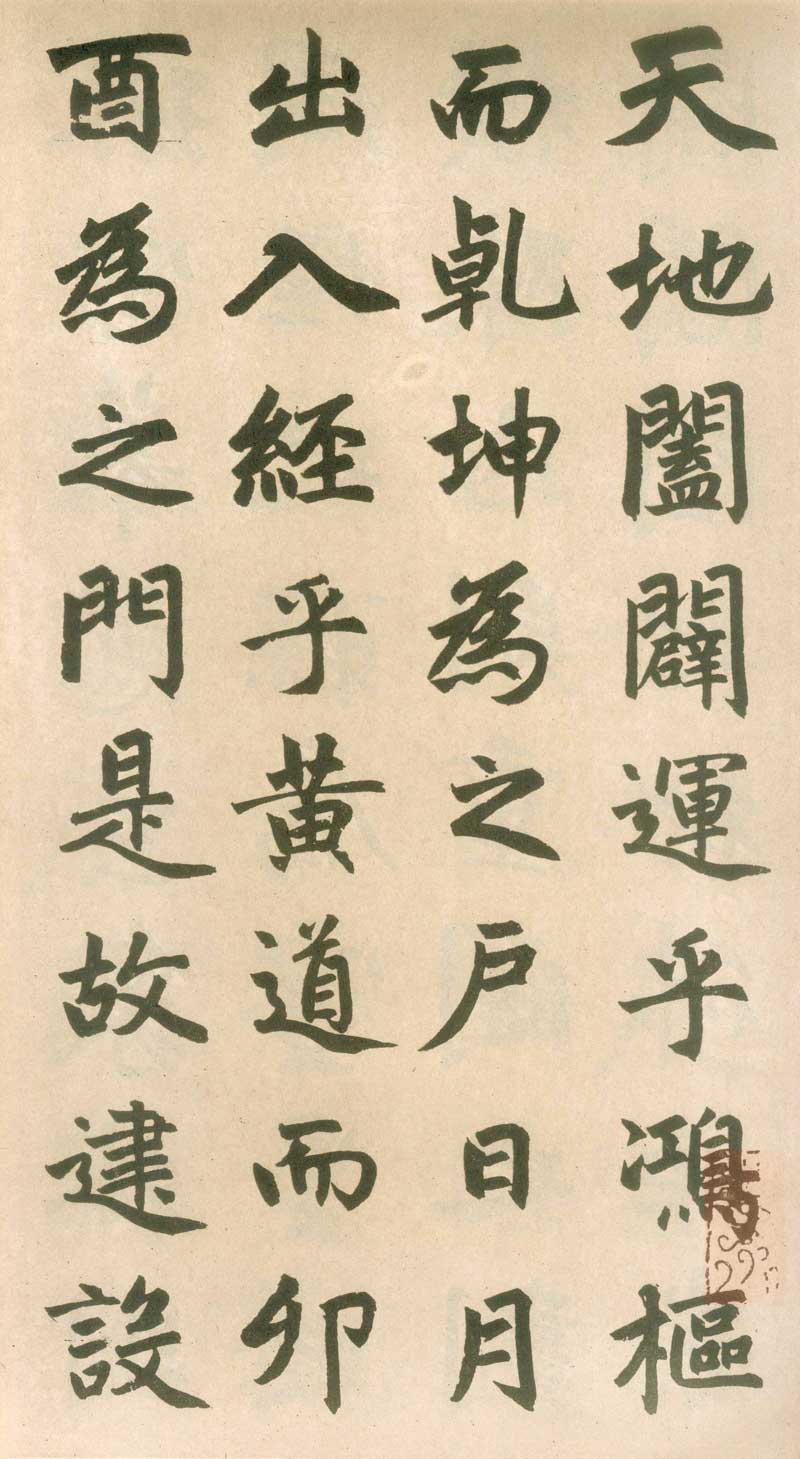
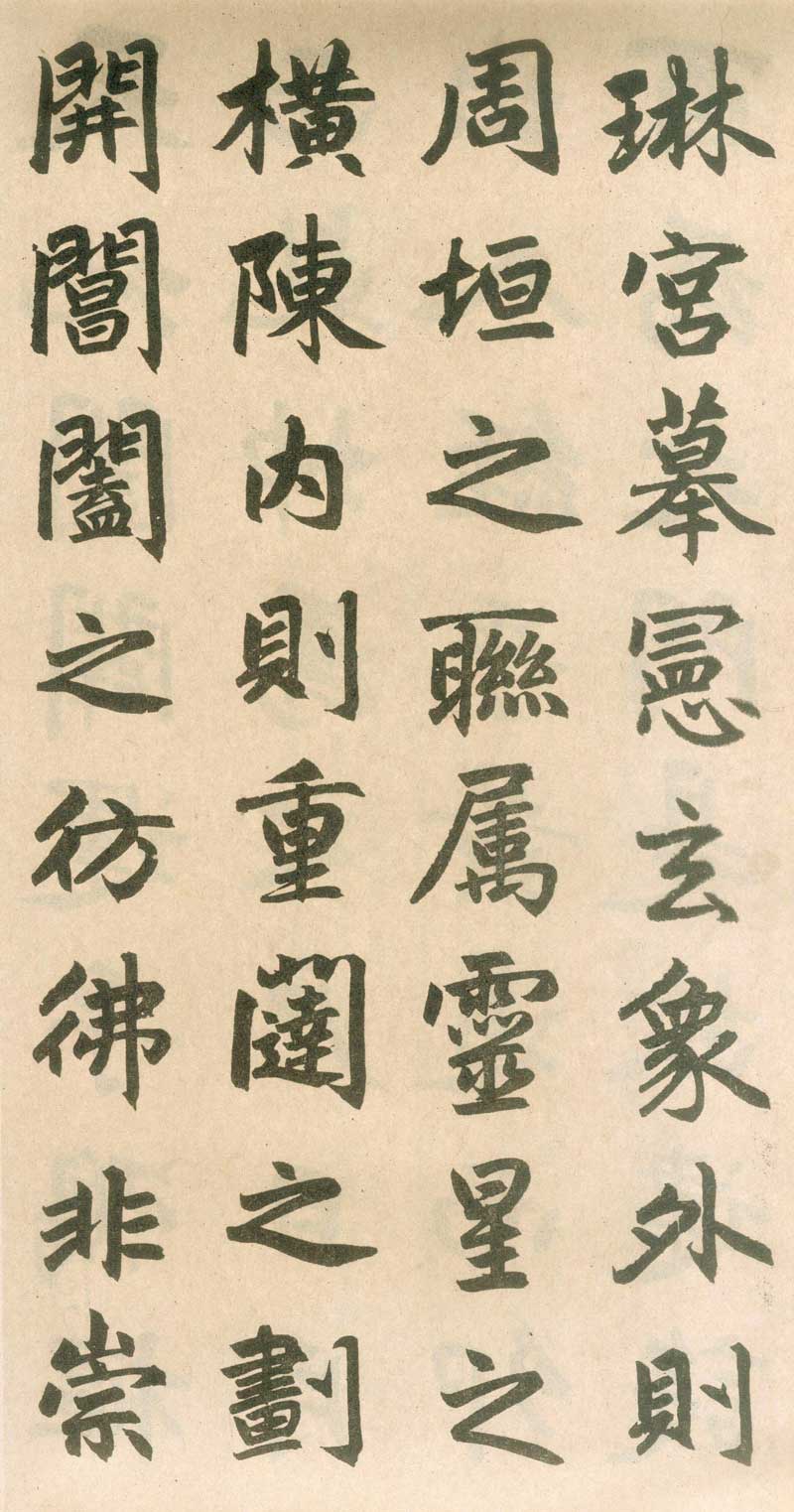
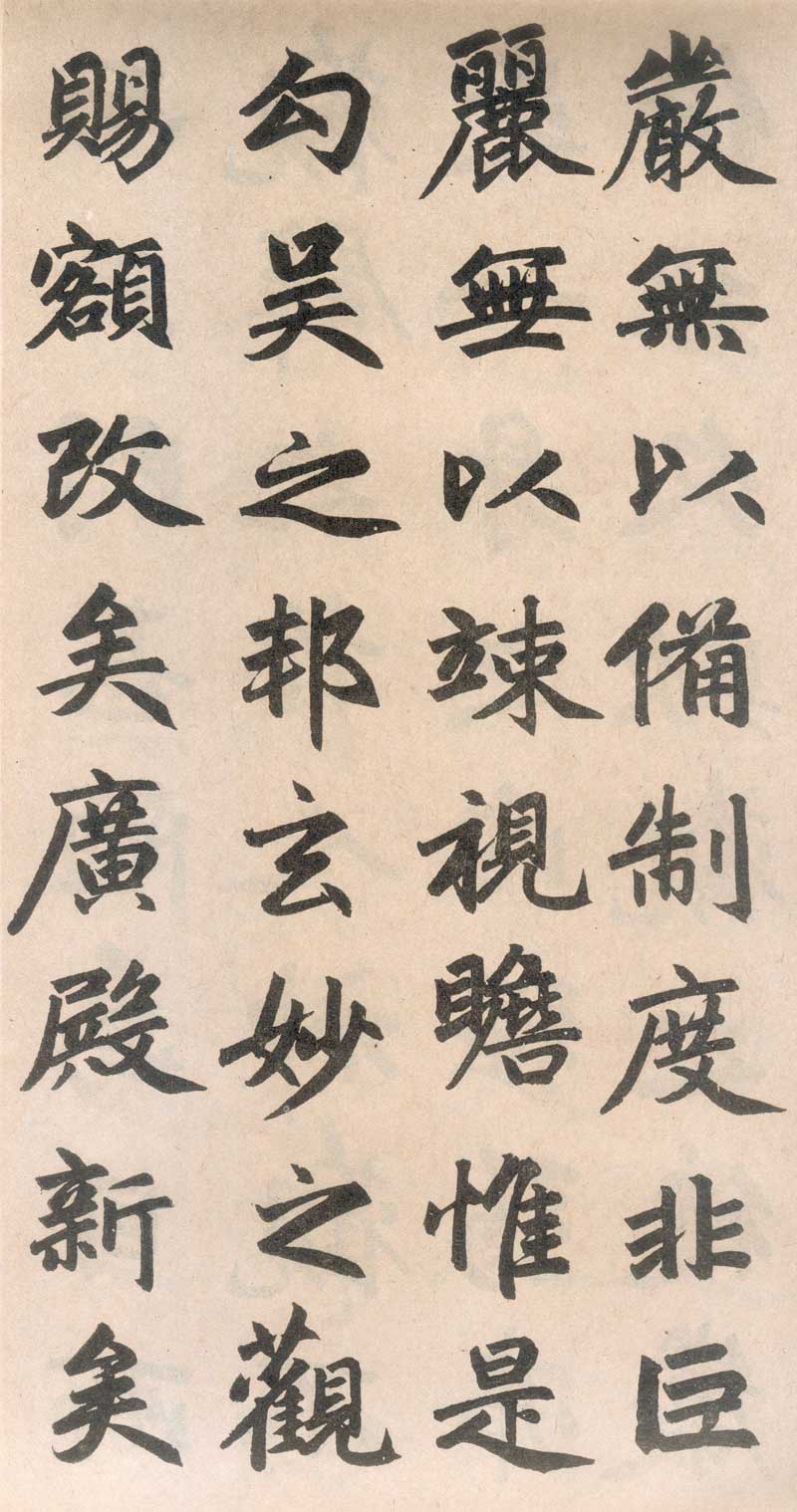
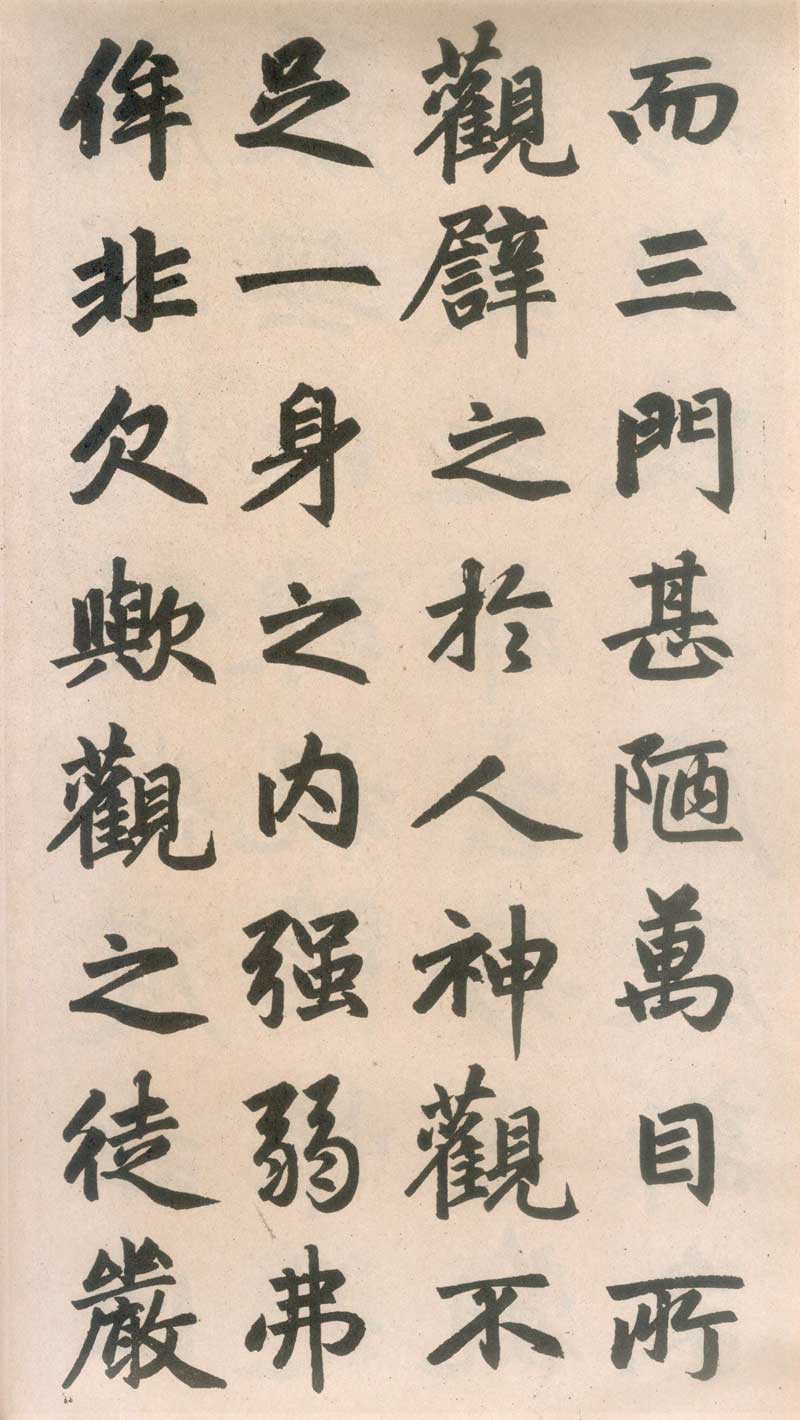
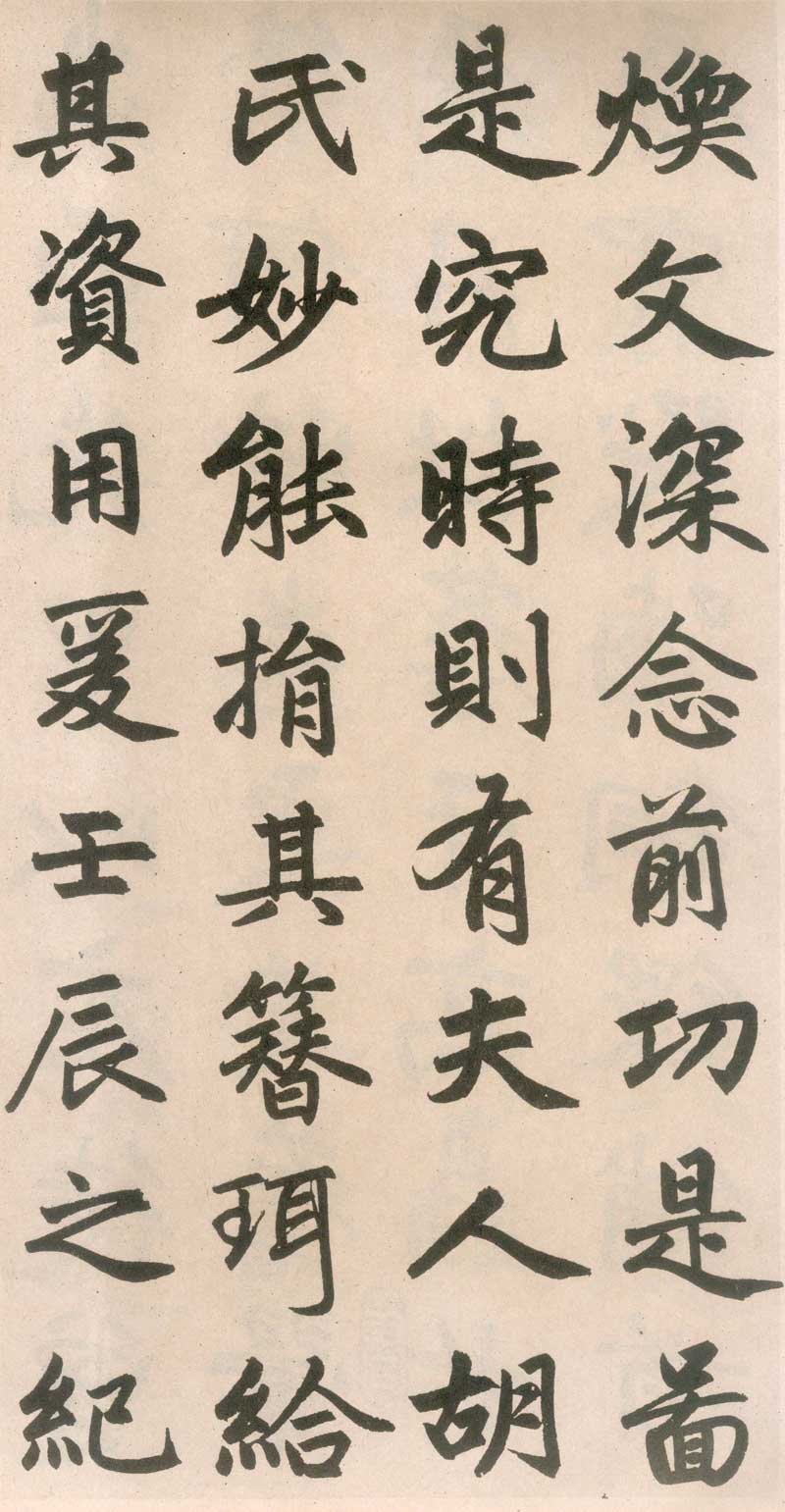
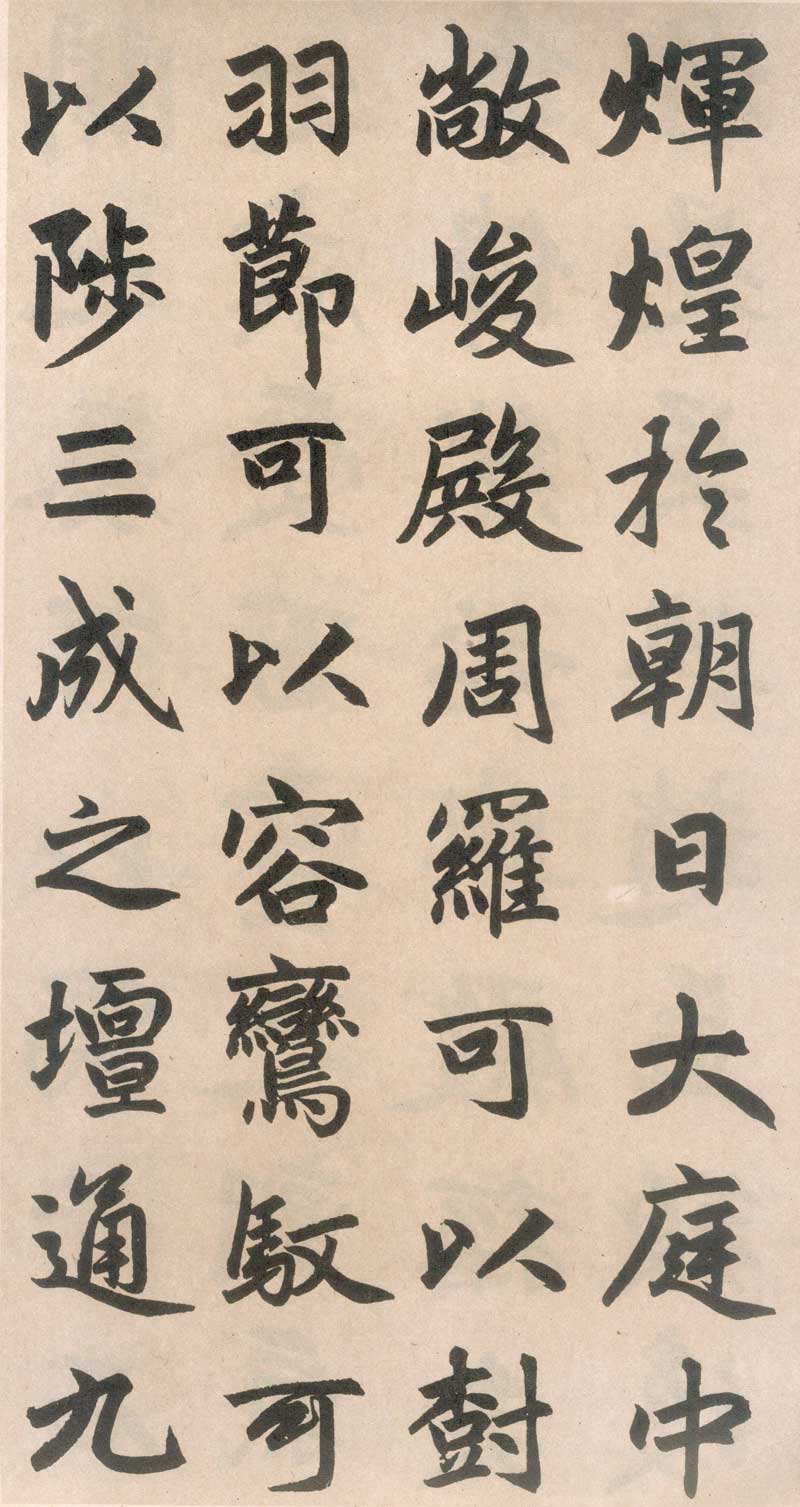
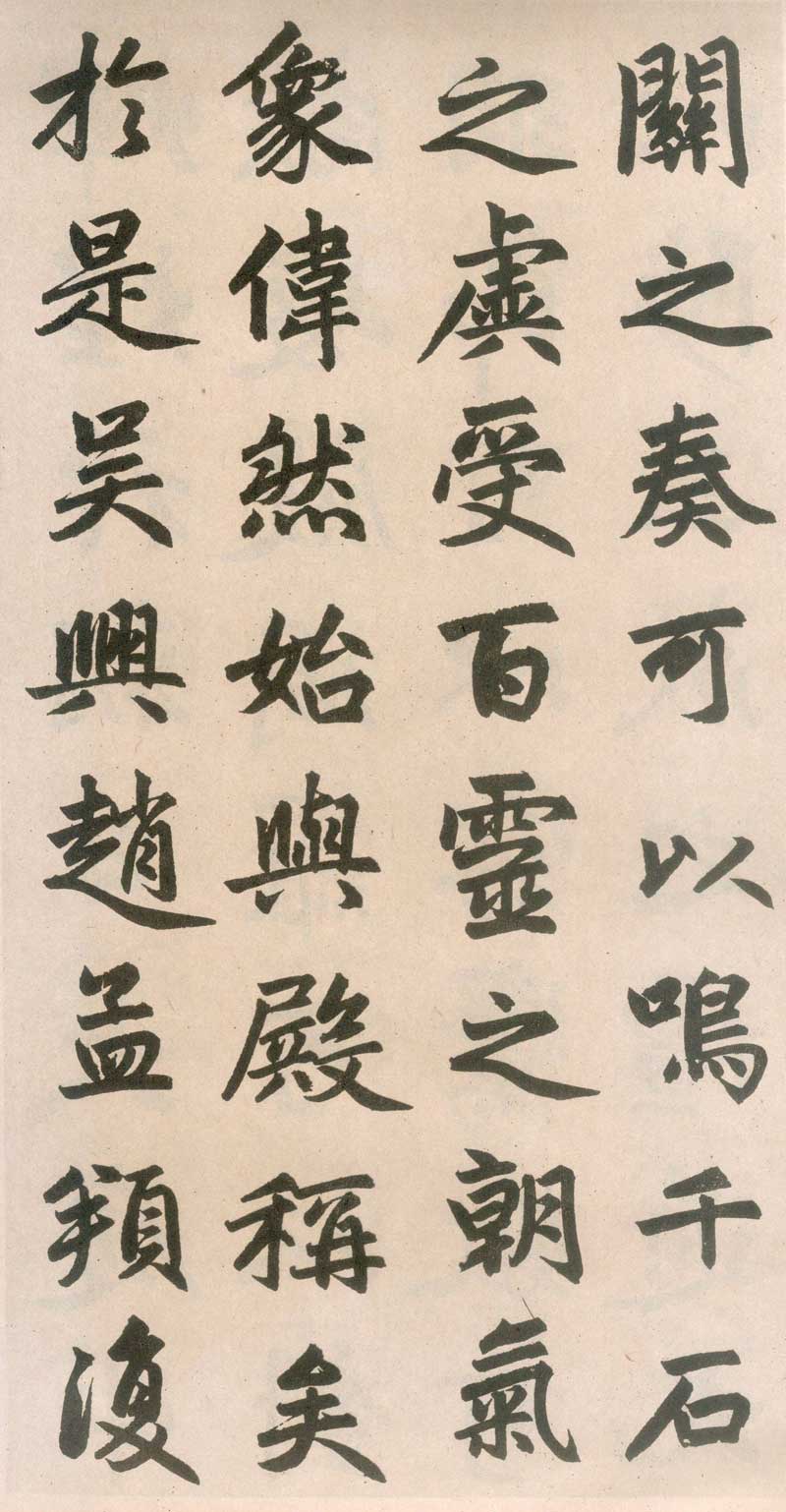
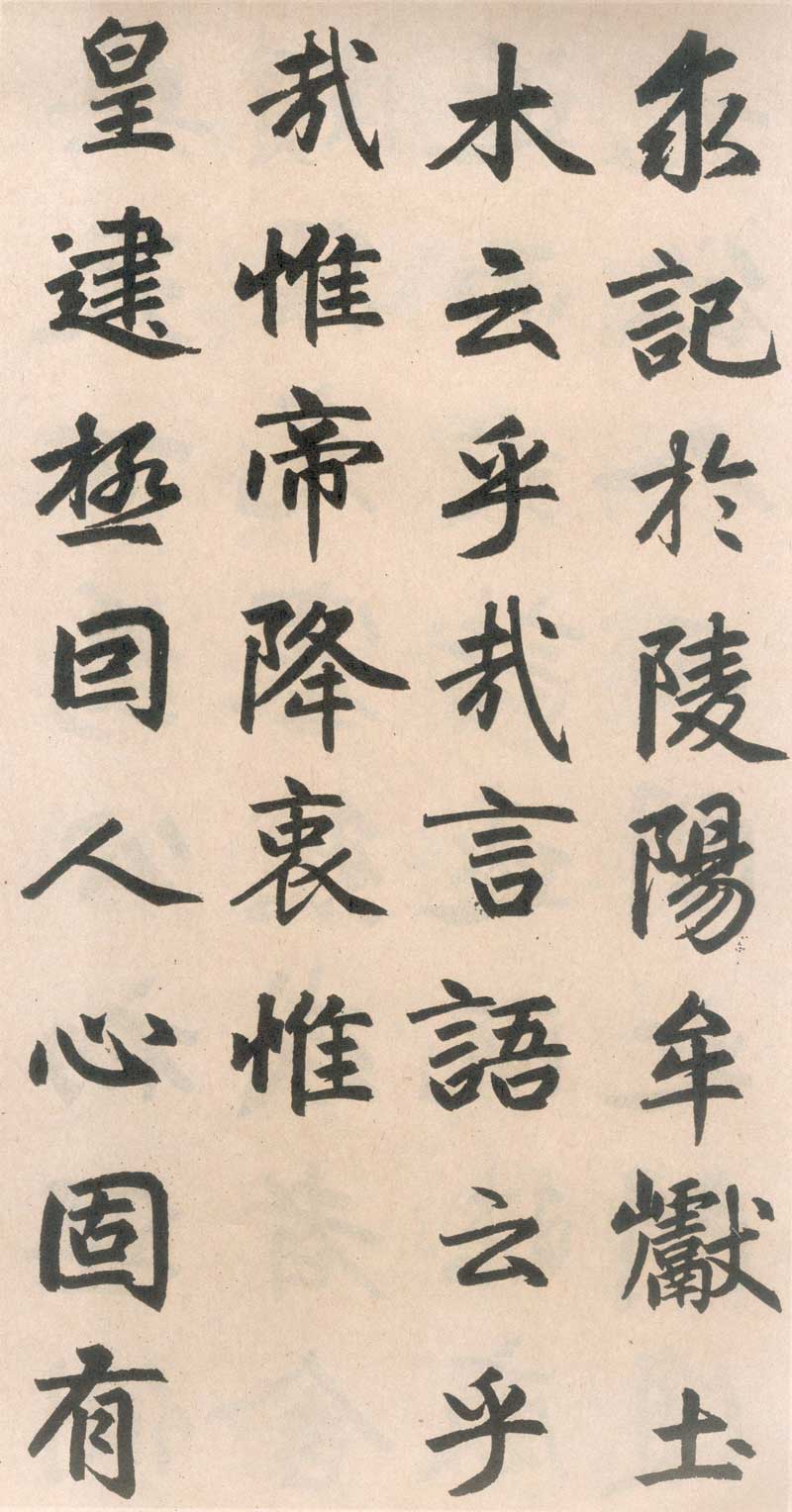
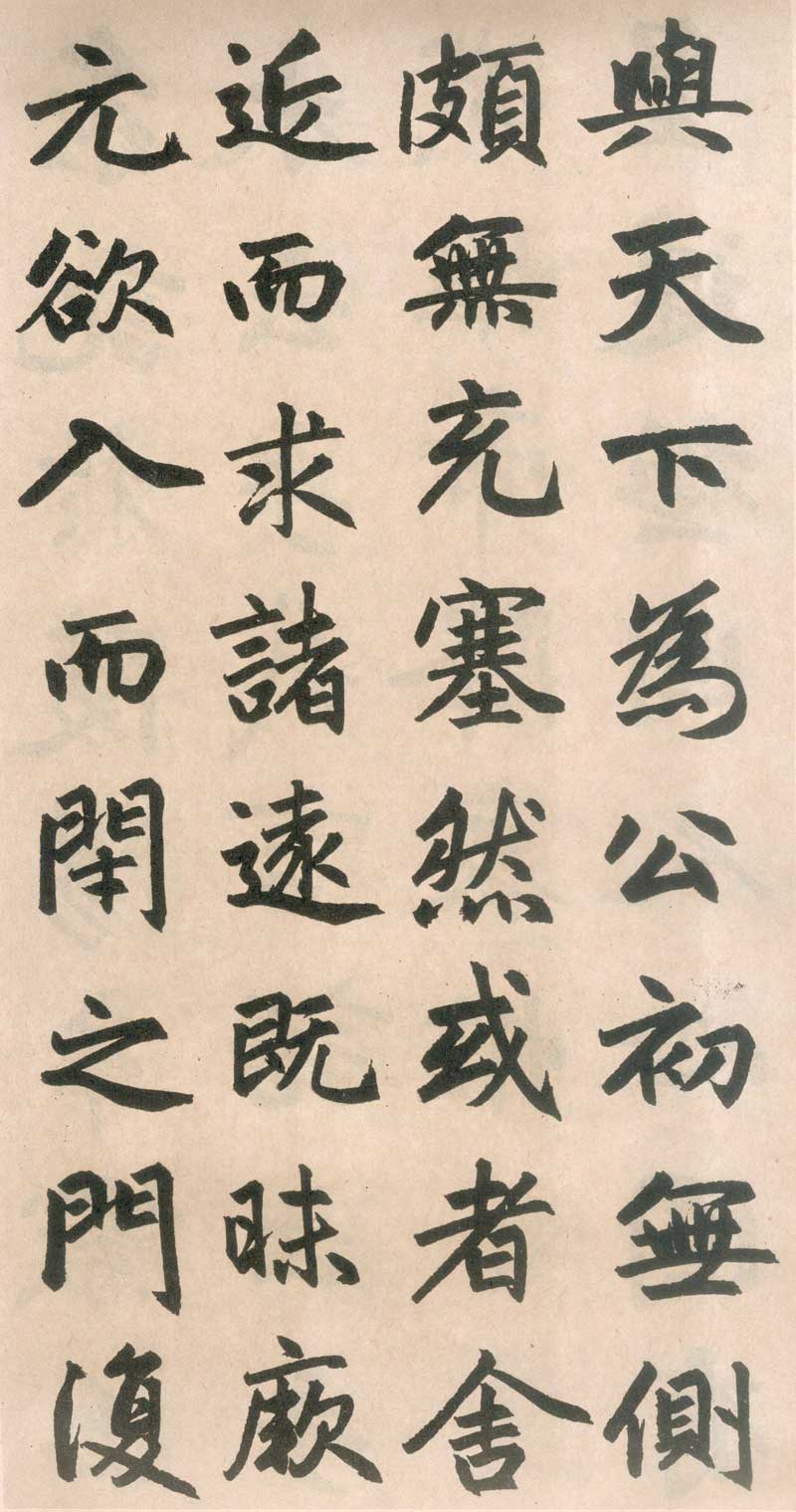
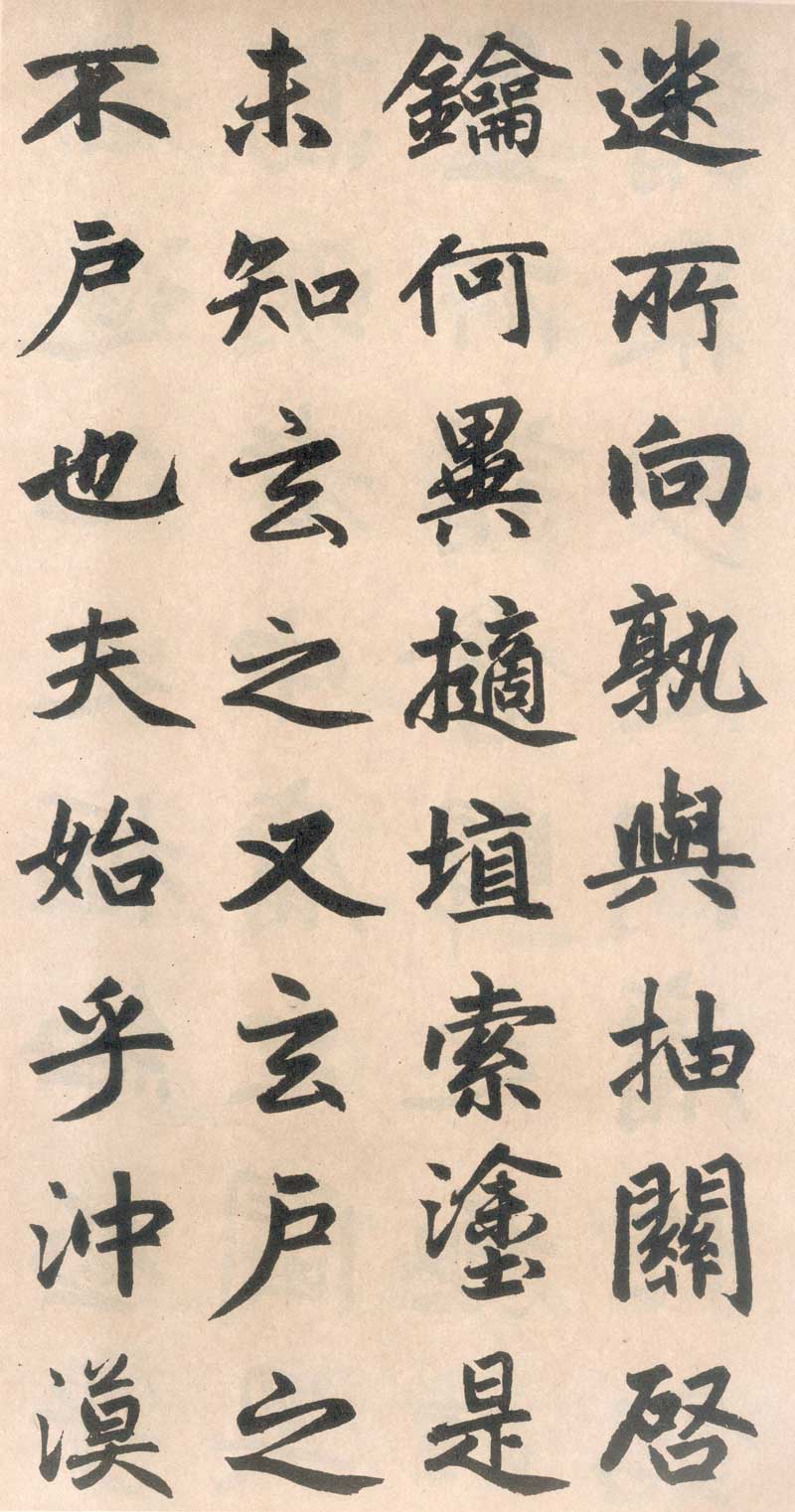
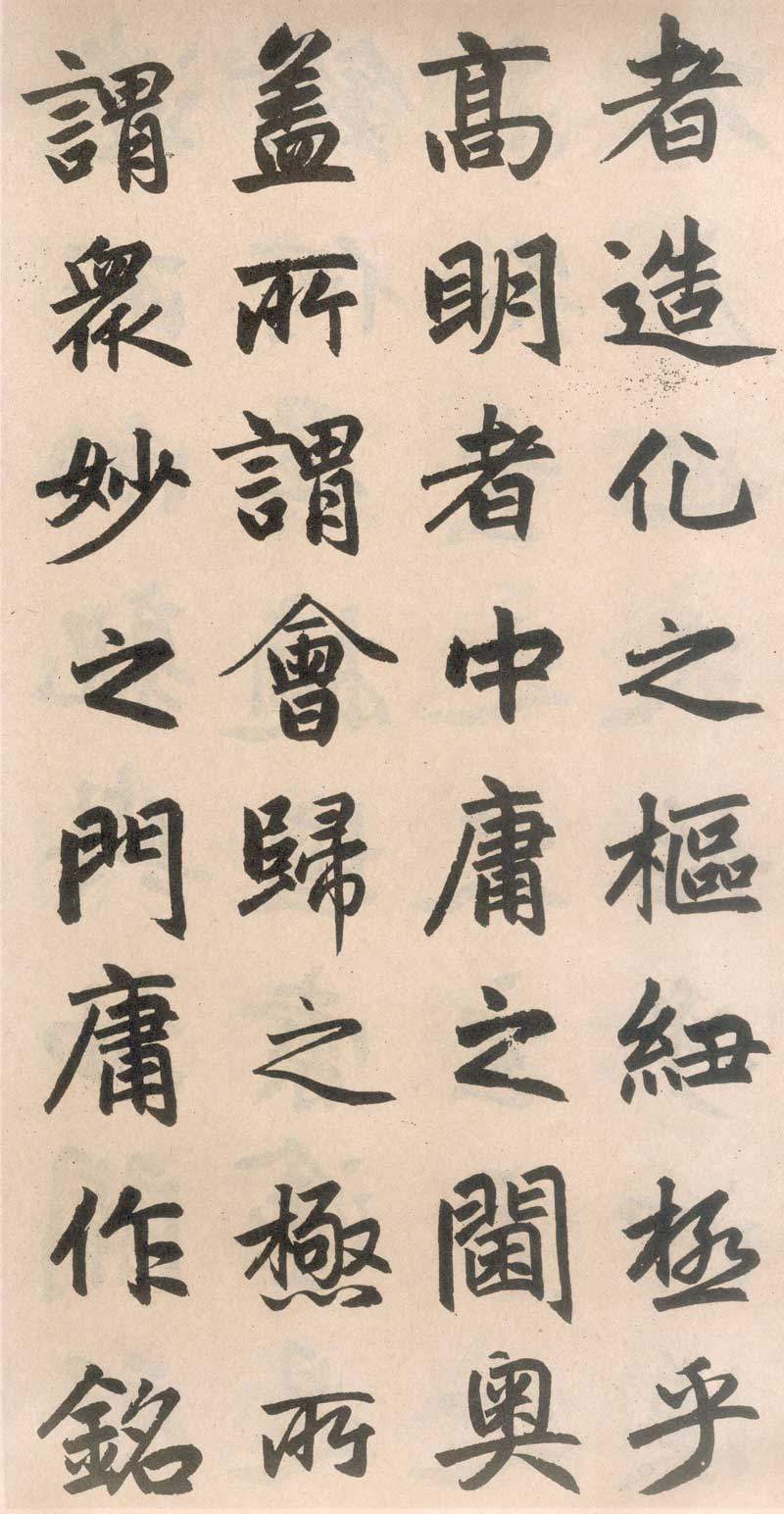
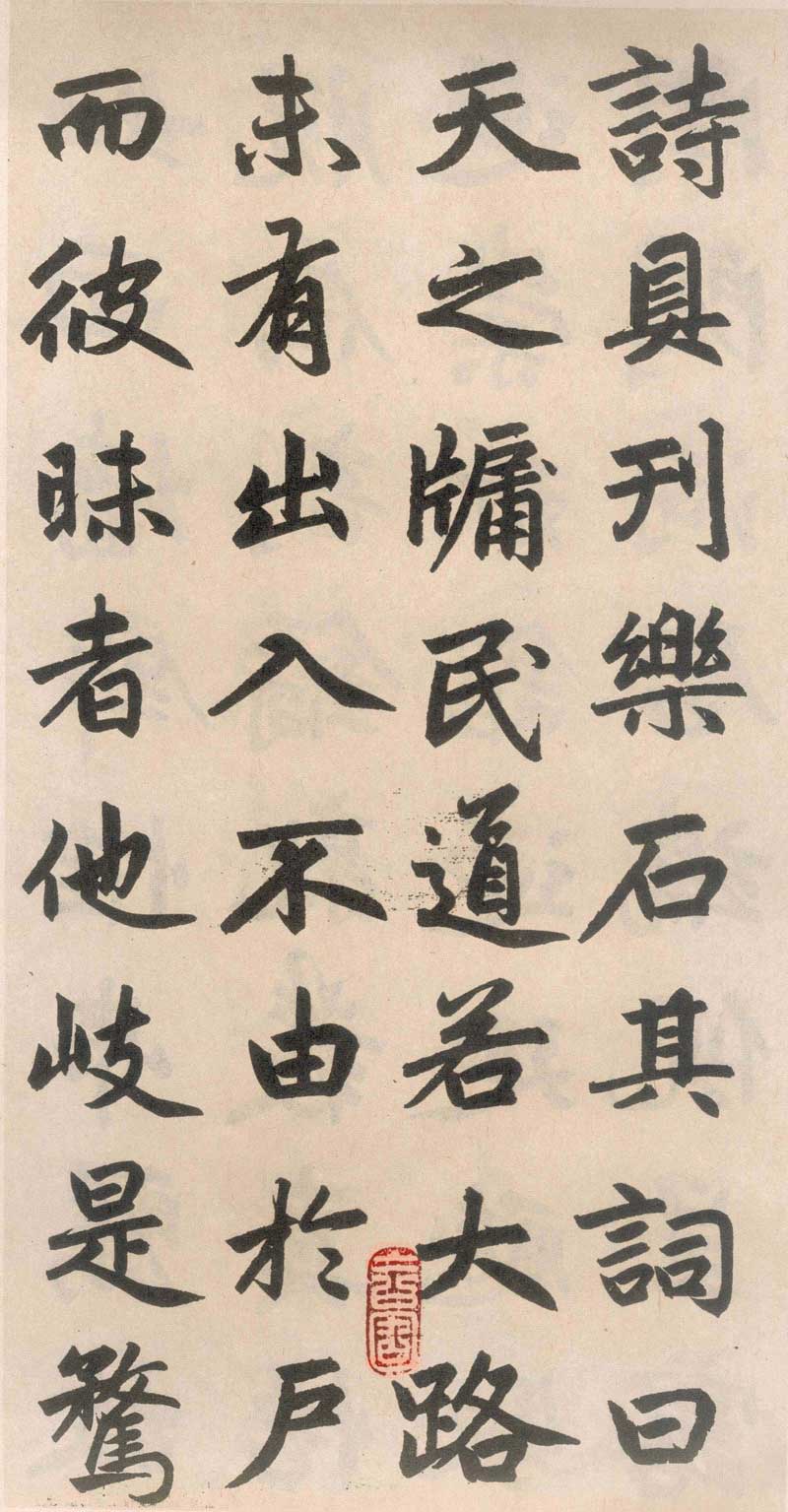
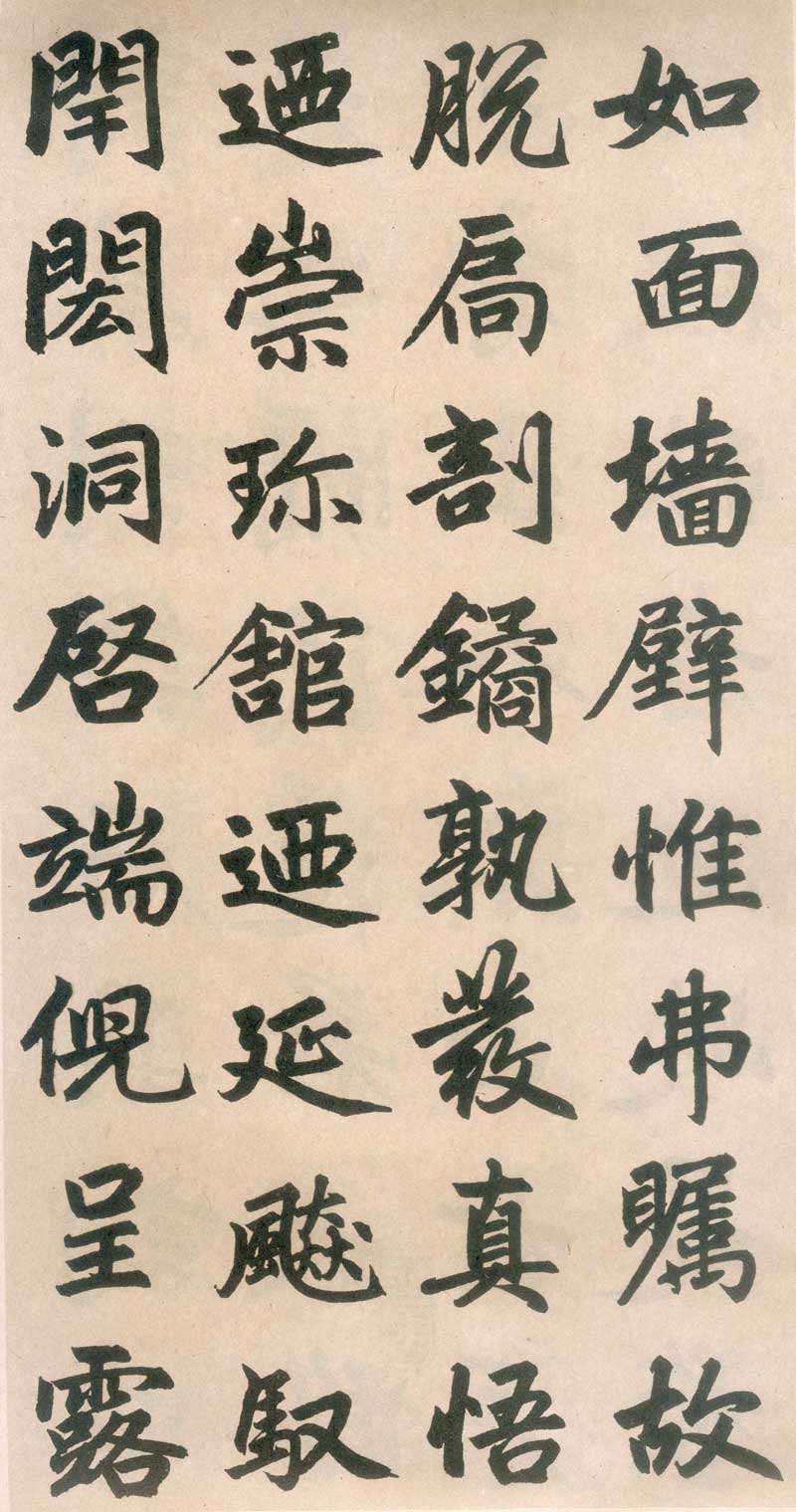
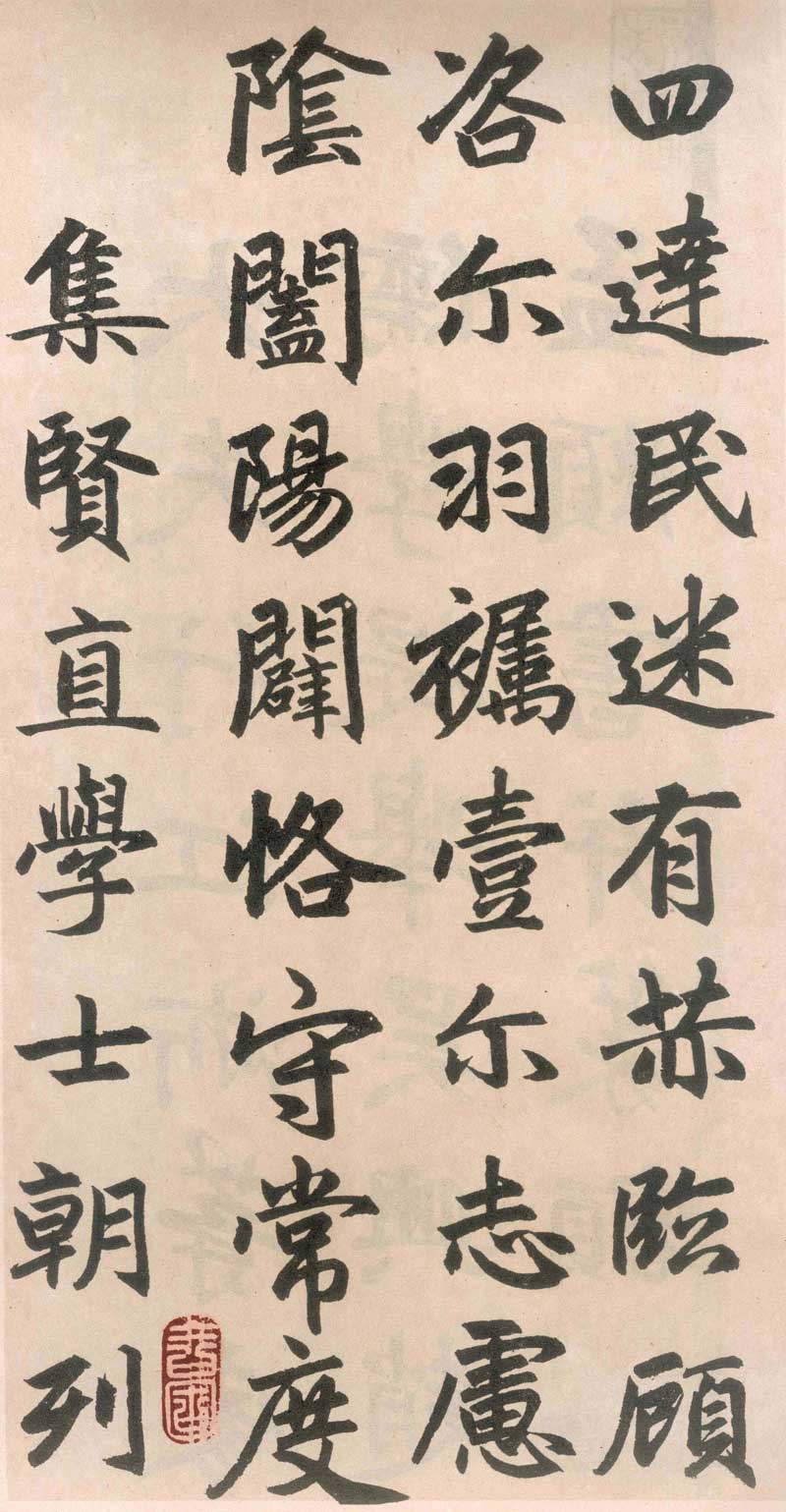
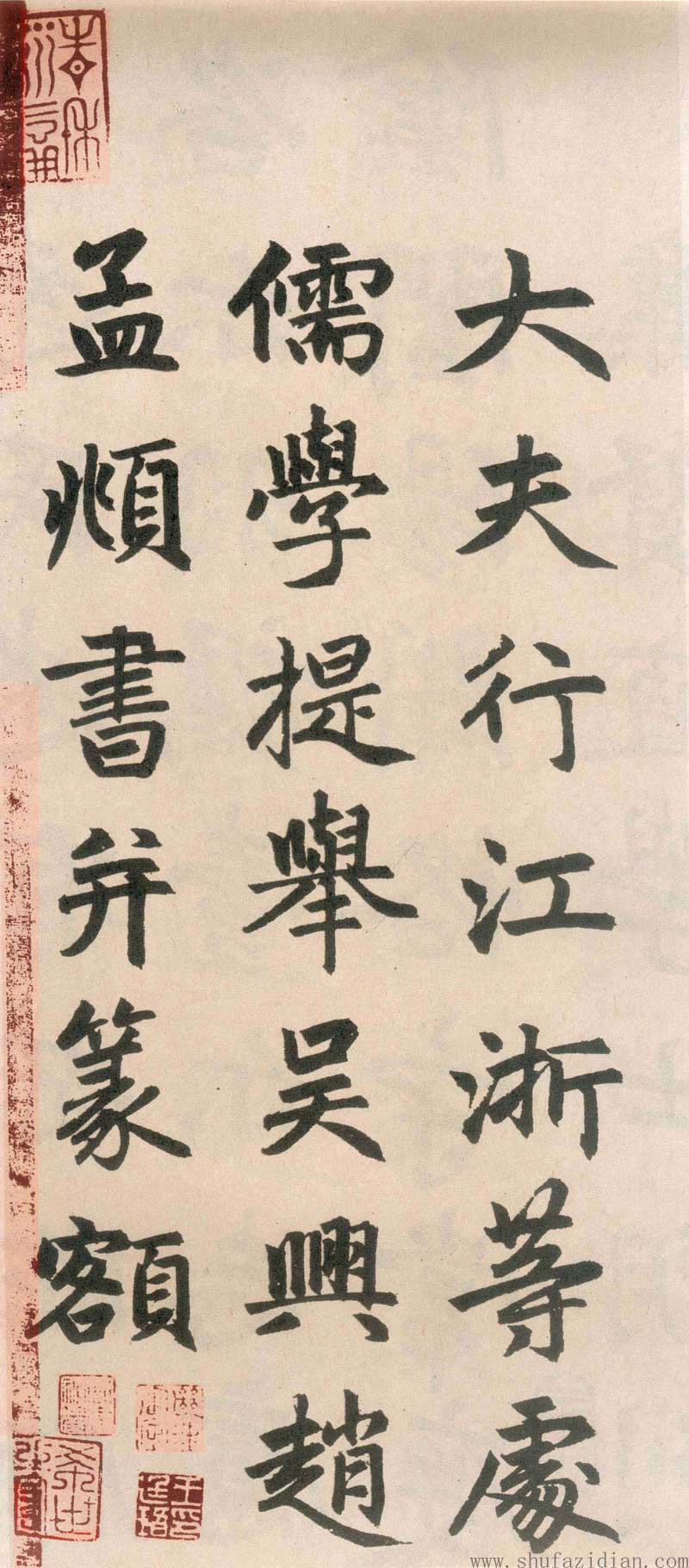
The ink used in this work is slightly light, the ink color is pure and moist, the calligraphy is tight, the stippling is accurate, and the brushwork is broad and fluent. The writing style is relatively strict, and the writing style is steady and meticulous. There is an occasional hint of running script in it, and the natural and elegant atmosphere is contained in the order and solemnity. Li Baihua of the Ming Dynasty praised the calligraphy of this stele as having the grandeur of Li Beihai of the Tang Dynasty, the depth of Xu Hao, and the spirit of Yan Zhenqing. He also praised it as "the best Zhao stele in the world" and has always been considered one of the representative works of Zhao Shu's regular script.
As the founder of a generation of calligraphy style, Zhao Mengfu held high the banner of retro style and pursued the calligraphy style of the Jin and Tang Dynasties. He can be said to be the unifying general in the calligraphy world. He was able to give full play to his superb talents, absorb the best of hundreds of schools of thought, and create new trends of the times. People regard Zhao Mengfu's regular script as the four famous regular script masters in Tang Dynasty: "Yan, Ou, Liu and Zhao". This shows that the regular script of the Yuan Dynasty has erected a new monument. Zhao Mengfu's regular script not only inherited the rigorous rules of Tang Kai script, but also absorbed the elegant charm of Jin Kai script. It emphasized that the use of pen is not bound by "obeying the law". This is the brilliance of Zhao Kai and the result of his practice. is successful. Judging from the "Three Gates", we can see not only the strict laws of the Tang Dynasty, but also the free and easy elegance of Youjun, Beihai, and Zhongyao families, and the perfect display of their personal talents. This successful practice further illustrates the uniqueness and completeness of his theory, that is, his calligraphy famous saying: "The word knot is passed down from time to time, and the use of the pen is difficult through the ages." It has become the true meaning of calligraphy pursued by later scholars. Therefore, it is no exaggeration to call him a master of regular script that has never been seen in hundreds of years.
【Explanation】:
Xuanmiao Guan's Reconstruction of the Three Gates
The heaven and earth are closed and open, and the movement is carried by Hongshu, and the universe is its household. The sun and the moon go in and out, passing through the ecliptic, and Maoyou is its gate. Therefore, the Lin Palace was built to imitate the xuanxiang. On the outside, the walls are connected and the spiritual stars are spread out. On the inside, the gates are divided and the doors and doors are like doors. If it is not for the strictness, there is no system to prepare for it; if it is not for the great beauty, there is no way to look at it; but it is the state of Wu and the mysterious view. The forehead is changed and the wide hall is new. However, the three gates are very crude, and what can be seen with thousands of eyes is like a human being. The spiritual vision is not enough. Within one body, there is no difference between strength and weakness. Isn’t that what I want? The disciple Yan Huanwen who was watching was deeply thinking about his previous achievements and studying the pictures. At that time, his wife Hu Miaoneng donated his hairpin and gave it to him. In the year of Yuan Renchen, he urgently needs to be the first to give it to the village. How long ago did the disciple learn to change it? In the old days, the flying Dan Gongs and eaves and teeth stood high in the sky; the beasts gnawed at the copper rings, and the pavements were brilliant in the morning sun. The large courtyard is spacious, the palace is surrounded by majestic buildings, it can hold the feathers of trees, it can accommodate the luan, it can hold the three-percent altar and pass the music of the nine passes, it can sing the tune of thousands of stones and accept the dynasty of hundreds of spirits. The atmosphere is majestic, and it is known as the palace. Therefore, Zhao Mengfu of Wuxing asked to record it again in Moujiang, Lingyang. The civil work and words were similar. Only the emperor surrenders his heart, and only the emperor builds the ultimate goal. Because the human heart is inherently aligned with the world, there is no side at the beginning, which is quite unencumbered. It may abandon the near and seek the far, which is ignorant of the original, wants to enter and closes the door, and returns to the lost direction. , What is the difference between opening the key and opening the key? It is the mystery of the unknown, the household is not the household, the beginning is the desert, the hub of creation, the supreme master, and the secret of the mean. The so-called ultimate point of return, the so-called door to all wonders, can be used as an inscription on a poem or a piece of music. His poem says: Heaven protects the people, and the road is like a big road. There is no going in or out of the house, and that person who is ignorant is Taqi. It's like facing a wall, but you can't look at it. After taking off the body and dissecting the body, who will achieve true enlightenment? It's Chongzhen Hall, it's Yanbiaoyu. The cave is opened and clues are revealed. The people of Sida are fascinated, and there is a great minister who will take care of them. When you are in charge of your feathers, you are willing to worry about it. The yin is closed and the yang is open, and you abide by the rules. Jixianzhi, a scholar, and other officials traveled to Jiangsu, Zhejiang, and other places to promote Confucianism, Wuxing, Zhao Mengfu, and seal seals

